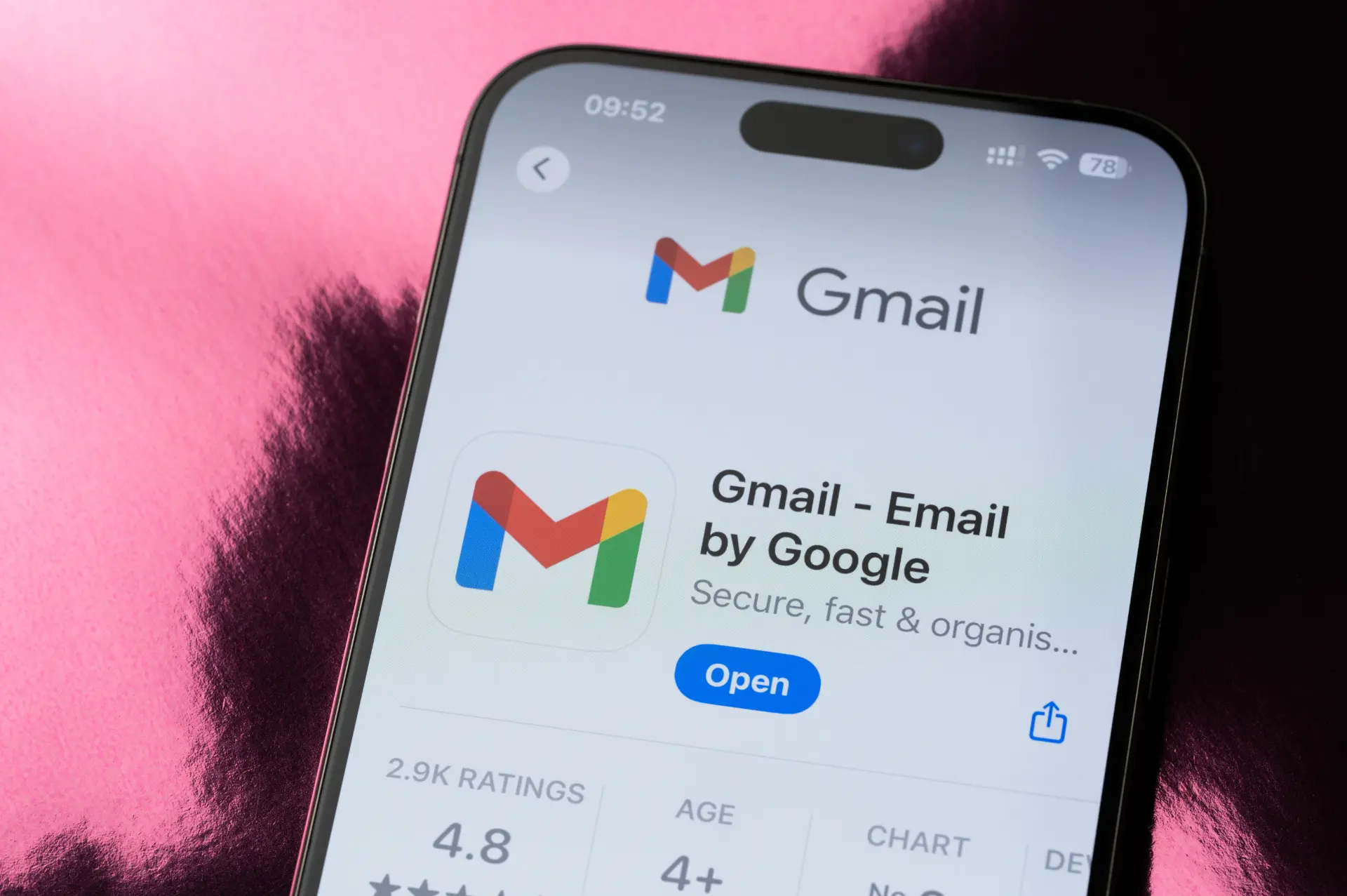Table of contents
- 1. “Some of your personal info was found on the Dark Web”
- 2. “Your account has been inactive for over 8 months”
- 3. “An old device is still connected to your account”
- Don’t wait for the next attack
Many users receive security alerts on Gmail and dismiss them, assuming they’re just routine notifications. But Google doesn’t issue warnings lightly.
While not every alert signals an imminent attack, ignoring them may leave you exposed to identity theft, unauthorized access, data breaches, or even losing your entire account.
In this article, we’ll analyze three critical Gmail security alerts you should never ignore and explain how to act immediately to protect yourself. If you’ve received any of these, don’t wait: take action now.
1. “Some of your personal info was found on the Dark Web”
The most alarming alert is the one that reports your personal information being found on the dark web. This comes from Google’s dark web monitoring service, available to users with Google One or who’ve run a Security Checkup.
The typical message reads:
“Some info associated with your Google account (like your email, phone number or password) was found in a data breach shared on the dark web.”What does it mean?
Your data was likely leaked in a breach involving an online service (e.g., e-commerce, app, or social platform) and is now being traded or shared on dark web forums and marketplaces. It can be used for fraud, identity theft or unauthorized logins.
What to do immediately:
- Go to https://one.google.com/ and open the Dark Web Report to see what was exposed.
- Change passwords immediately on affected services especially if you reused them elsewhere.
- Turn on two-factor authentication (2FA) on key accounts.
- Use a password manager to create strong, unique passwords for each service.
2. “Your account has been inactive for over 8 months”
This alert might sound harmless, but it’s actually a warning tied to Google’s policy for unused accounts. If you haven’t accessed your Google account in over 6 months, Google will notify you. After 24 months of inactivity, your account including your Gmail, Drive, Photos and data may be deleted.
You may see a message like:
“You haven’t used your Google Account in a while. It might be deleted if you continue to be inactive.”Why does it matter?
- You might lose access to important files, photos or archived emails.
- Inactive accounts are less monitored and more vulnerable to hacks.
- You might miss alerts about suspicious activity.
What to do immediately:
- Log in to the account at least once every 6 months.
- Enable security notifications and check recent device activity.
- If you no longer need the account, delete it safely but export your data first via Google Takeout.
3. “An old device is still connected to your account”
This alert notifies you that a previously used device is still linked to your Google account. This may happen if:
- You gave away, sold or discarded an old phone without removing your account.
- You signed in on a shared computer or temporary device.
- You changed phones but never logged out from the old one.
The alert may say:
“Some outdated devices are still connected to your account. We recommend removing them.”Why is this risky?
- If you no longer control the device, someone else might access your data.
- The device may lack security updates, exposing your account.
- These devices may access your account without triggering a security alert (especially if in the same country or IP zone).
What to do immediately:
- Visit https://myaccount.google.com/device-activity
- Remove any device you don’t recognize or no longer use.
- If in doubt, sign out from all devices and change your password.
Don’t wait for the next attack
The security of your Google account doesn’t just depend on your tech skills it depends on how quickly you respond to warnings. Ignoring these three alerts puts you at risk of data loss, unauthorized access, and identity theft.
To stay protected:
- Regularly check your dark web report
- Log in to inactive accounts at least once every 6 months
- Remove old or unused devices from your account
Prevention is always better than damage control. Act now.
Questions and answers
- How do I activate the Google dark web monitoring report?
Subscribe to Google One and go to one.google.com > “Dark Web Report” section. - What happens if my Google account stays inactive for too long?
After 2 years of inactivity, Google may delete the account and all associated data. - How do I remove an old device from my account?
Go to myaccount.google.com/device-activity, select the device and click “Sign out”. - How does Google know if my info is on the dark web?
It monitors known data breaches and scans for your account data on indexed dark web sources. - Can I get these alerts on my phone too?
Yes, you’ll receive them as push notifications and in your Google Account dashboard. - Can I recover a deleted Google account?
Possibly but only for a short time after deletion. Recovery is not guaranteed. - What are the risks of leaving an old device connected?
It can be used to access your data, sync sensitive info, or bypass some security alerts. - How often does Google scan for my info on the dark web?
If you have Google One, scanning is ongoing and alerts are sent when new leaks appear. - What should I do if my password is compromised on the dark web?
Change it immediately and turn on two-factor authentication for that service. - Can I disable Google’s security alerts?
It’s not recommended. These alerts are crucial to keep your account safe.
